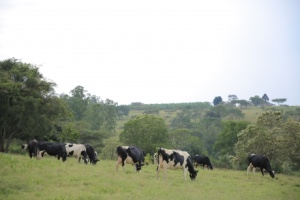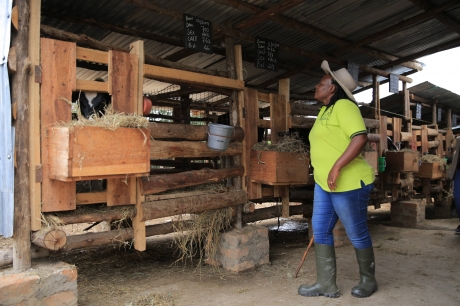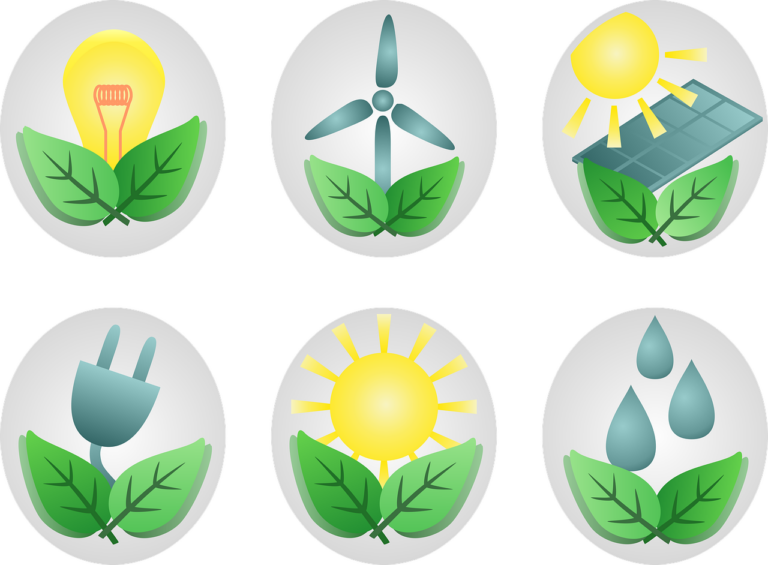
Kampala: “Everything is based on the well-being of our cows,” declares Loyda Twinomujuni, the Ugandan owner of a 150-acre farm with 80 cows and staffed with three employees. For Loyda and her staff, steady and reliable milk production means the world, allowing them to pay for their household needs, children’s school fees, house maintenance expenses and starting a family.
However, Loyda was deeply concerned: her animals were in poor health and produced little. “They don’t look okay. You can tell from their coats; that they are not shiny.” Hunger, malnutrition and disease haunted the farm.
The biggest challenge was the lack of feed. The cows walk around the farm and eat the grass that grows naturally during the wet season, March to November, Loyda explained. However, when the dry season starts, the farm runs out of feed quickly. “We have cows that actually died of hunger,” Loyda adds sadly.

What’s worse, climate change has prolonged the dry season and drought hits the farm more often than ever before. Combined with pests and diseases, the ill-being of the cows casts a shadow on the income of the farm, threatening the livelihoods of Loyda and her workers.
Despite all of these challenges, Loyda had large ambitions. Her goal was to be able to produce over 1 000 litres of milk per day, even though the farm was barely making 500 litres. She had no idea where to begin. Then she heard about an FAO project that was teaching farmers to enhance the production and productivity of their farms.
This project is under the FAO-China South-South (SSC) Cooperation programme. It is among the programme’s longest and most successful collaborations, with over 40 Chinese agricultural experts sent to work with local farmers and rural communities in Uganda.
These experts closely observed Loyda’s practices and shared their knowledge on how to improve production and animal health. Technical officers from FAO and China advised Loyda to plant grass and maize varieties, which have a higher yield in the rainy season.
Loyda signed up for the new practice without hesitation. “I don’t want to see my cows starve or lack nutrition [anymore]”. The SSC project provided high-quality Napier seeds showed her and employees how to make silage, a type of fodder made from green foliage crops, and provided a grass chopper to ease this labour-intensive activity.
Loyda also learned how to better prepare for droughts. Technical experts from FAO and China recommended that she wrap the silage and store it in the bunker during the wet season. She used to dig a hole in the ground to store the silage, but it would rot due to the humidity. Cows can have health problems after consuming low-quality silage.
“During a drought, we feed the cows with silage so we can maintain the level of milk production,” explains Loyda, having acquired this knowledge from the SSC agricultural technicians. “Wrapped and stored, it [silage] can preserve up to two years.”
The storage capacity of Loyda’s farm expanded to be able to carry the animals through five months of feeding in case of a drought.
When the cows started feeding on silage, milk production increased from seven litres per cow per day to 35-40, representing an enormous increase in productivity. She achieved and surpassed her ambitious goal. Now the farm has over 200 cows, producing over 1,500 litres of milk per day.
Loyda managed to acquire an additional 30 acres of land and hire 12 more employees. “SSC has improved the life quality of everyone on this farm.”
Loyda is very grateful for the project: “Everyone benefits from it and our quality of life improved. On this farm: cows never starve, family incomes have increased, and my workers can pay for school fees for their kids, build houses and get married.”
She was eager to share her experience. She arranged tours for other farm owners to learn the good practices. “A lot of people have more land than us, but they come and ask us: ‘how can you feed so many cows in such a limited space!’ We show them how we use the machine and prepare the silage,” Loyda says proudly.
The success of the project has not only helped Loyda and other smallholder farmers in their personal and professional lives but also brought to light the persistent farming challenges that are not singular to Uganda.
The SSC programme support countries’ national development goals by solving agricultural constraints that farmers face. Through the SSC, FAO brings together countries, facilitates dialogue and provides a framework for cooperation, in addition to providing extensive technical capacity and resources. FAO-China SSC projects currently operate in 20 countries.
Loyda is now ready to further expand her business. Her next goal is to get a cooler to preserve the milk and make dairy products like yoghurt and cheese, which “can sell for more money” and are less subject to price fluctuations. With the technical support of SSC, she is confident that her dream will soon be realized.
Source: the FAO News and Media office
– global bihari bureau





